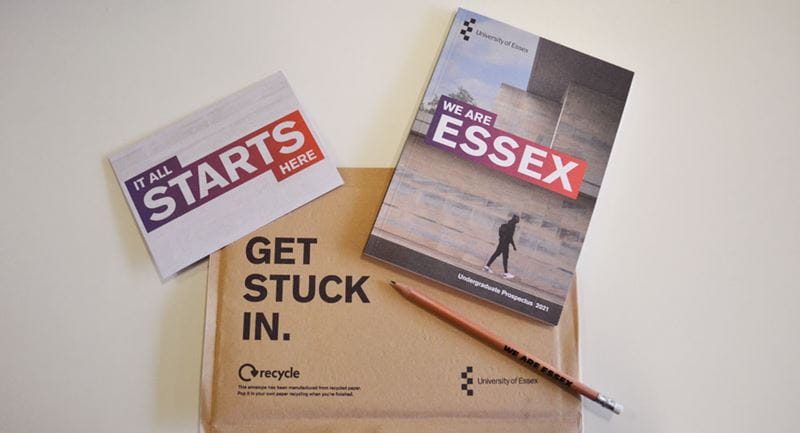New coral gardens, species, and hydrothermal vents discovered
-
Date
Thu 15 May 25

An international team of deep-sea scientists led by a University of Essex researcher discovered suspected new species, hydrothermal vents, and coral gardens near remote island chains.
The Ocean Census Flagship expedition aboard Schmidt Ocean Institute's research vessel Falkor (too) explored the South Sandwich Islands, including one of the coldest and most isolated submarine trenches on the planet, and also found evidence of explosive volcanism.
This was the same expedition that filmed the first confirmed sighting of a juvenile colossal squid.
The expedition was part of the Nippon Foundation–Nekton Ocean Census program, the world’s largest initiative to accelerate the discovery of ocean life.
The Ocean Census scientists led the species discovery efforts, uncovering a wide range of potentially new marine life–including corals, sponges, snails, sea urchins, benthic ctenophores, and sea stars.
Explore the finds in the gallery below
The exact number of new species will be announced later this year following an Ocean Census workshop, where taxonomic experts will formally assess and catalogue the findings.
The GoSouth team—a collaboration between the University of Plymouth (UK), GEOMAR (Germany), and the British Antarctic Survey (UK)—investigated the effects of geohazards, including tsunamis, volcanoes, and earthquakes.
“This expedition has given us a glimpse into one of the most remote and biologically rich parts of our ocean,” said Dr Michelle Taylor, head of science and expedition principal investigator at the Ocean Census, and senior lecturer at the University of Essex.
“This is exactly why the Ocean Census exists—to accelerate our understanding of ocean life before it’s too late
“The 35 days at sea were an exciting rollercoaster of scientific discovery; the implications of which will be felt for many years to come as discoveries filter into management action.”
Stormy weather
Mother Nature threw everything she had at the expedition, said Dr Taylor, including a subsea earthquake, tropical storm force winds with hurricane-level gusts, eight-meter (26-foot) waves, and icebergs to navigate.
Located in the South Atlantic, the South Sandwich Islands are part of a rich mosaic of geologic features such as hadal zone trenches, underwater volcanoes, and spreading centres — features created by tectonic forces that have supported the evolution of species found nowhere else on the planet. It took eight days for the research vessel to travel to the islands from the port of Punta Arenas, Chile.
The GoSouth team, led by Co-Chief Scientist Dr Jenny Gales, discovered two pockmarks in the mapping data of an underwater caldera— a bowl-shaped depression in the seafloor, left after a volcano erupts. Pockmarks can indicate hydrothermal activity.
Using a “nested” approach, the team deployed Schmidt Ocean Institute’s remotely operated vehicle, SuBastian to map the pockmarks at a higher resolution and confirm the presence of vents.
The larger pockmark contained three hydrothermal vents, and the smaller contained one.
Located at 700 meters depth (nearly 2300 feet), they are the one of the shallowest hydrothermal vents to have been discovered near the South Sandwich Islands.
'Magical moment'
The tallest vent chimney was four meters (13 feet), making it about as tall as a basketball hoop.
Each vent was covered with an array of life dependent on chemosynthesis, including sea snails and barnacles.
Thriving coral gardens and large sponges were found in close proximity to the vents–an unusual observation, said Dr Taylor.
“Discovering these hydrothermal vents was a magical moment, as they have never been seen here before,” said Gales, an associate professor in Ocean Exploration at the University of Plymouth .
“It's an incredible discovery that provides valuable insights into the area’s tectonic activity. Making such a discovery is rare. It highlights the importance of ocean exploration and seafloor mapping.”
In addition to the vents, other notable observations during the expedition included:
- In the trench, scientists found snailfish eggs that had been laid on a black coral, as well as a potential new sea cucumber species
- Large pumice blocks, indicating that the South Sandwich Islands are capable of explosive volcanism;
- A vibrant coral garden located west of Saunders Island at a depth of 120 meters (394 feet);
- Capturing the first footage of Akarotaxis aff. gouldae, a species of dragonfish that was discovered two years ago.
“The challenging ocean and weather conditions and the isolated location of the South Sandwich Islands capture the imagination of the boldest explorers - often the closest humans to the vessel were on the International Space Station,” said Schmidt Ocean Institute’s Executive Director, Dr. Jyotika Virmani.
“We are proud to have collaborated with Ocean Census in their mission to advance discovery of marine life and GoSouth in their quest to better understand the geological nature of this dynamic corner of the world.”












.jpg?mh=500&mw=500&hash=6568B6C9CCF5290A596BEF6678B6AD0E)



